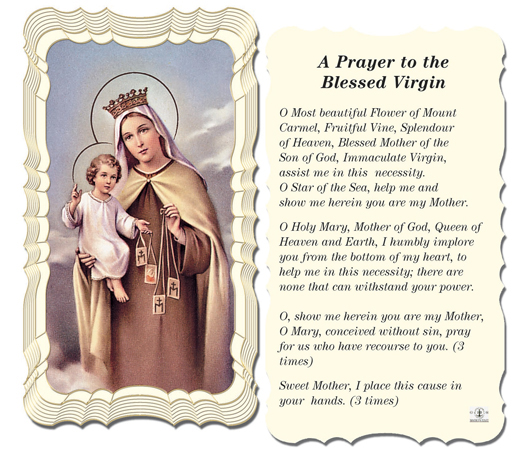This
is the first of three posts on Flannery O’Connor’s short story, “The Displaced
Person.” In my commemorative post of the
100th anniversary of O’Connor’s birth, I mentioned I would be posting on this story.
In that post I also delved into O’Connor’s essay, “The Nature and Aim of Fiction” where O’Connor
provides her aesthetic philosophy to writing fiction. I will touch on that aesthetic philosophy in
this post as it applies to “The Displaced Person.”
What
compelled me to read “The Displaced Person” was the issue of immigration that
has arisen in the past few months with the Trump administration. Someone posted that this story captures the
Catholic view on immigration. So I
pulled out my Flannery O’Connor: The
Complete Stories and opened up to “The Displaced Person.” If you don’t have a hardcopy version and wish
to read it, there is an online facsimile in PDF of the entire book. You can find it here, and “The Displaced Person is on page 205 in the PDF format. (Be aware, the hard copy page numbers don’t
exactly match the PDF version.)

Published
in 1955, the setting of “The Displaced Person” is roughly contemporaneous to the writing.
Immigration was certainly in O’Connor’s news since Eisenhower’s mass
deportation program of Operation Wetback began in June of 1954 and ran through
the summer into September. This was a
mass deportation of Mexican illegal immigrants but the reality was that legal
immigrants and even American citizens of Mexican descent were confused. In all, over a million people were deported. Let me apologize up front for the slurs that
will run through this essay. I am just
articulating the language of the story and the times and it has nothing to do
with my personal language or characterization.
O’Connor’s
story takes place at the southern farm of a Mrs. McIntyre where she has a poor
white family, the Shortley’s, and several African-Americans as the long time paid
help. Mrs. McIntyre, a widow, takes in
an immigrant man with two children from Poland from a government policy to
integrate immigrants. The setting is
shortly after World War II, and so Poland has experienced a large number of
displaced and poor people. The farm has
struggled to break even, and the long time help is either lazy or
incompetent. The Polish immigrant, a Mr.
Guizac, the displaced person, is just the opposite. He is a workaholic, very
competent, and capable of fixing all the farm equipment. His family has been displaced by the Nazis in
Europe and are now refugees. An American
Catholic priest has sponsored the immigrants and had them placed with Mrs.
McIntyre.
Why
does O’Connor make the immigrant from a European background rather than what
would have been more likely a Mexican background? It’s hard to say. The Wikipedia entry on the story says that O’Connor’s family had hired
such an immigrant from Poland. But she
changes so many other aspects of the situation that making the character Polish
goes beyond personal experience. Perhaps she was trying to not link it with
the political issues that would have been circulating around her. Perhaps she was making the immigrant more
exotic to American readers. Perhaps she
was trying to eliminate contemporary prejudices that had been built up over
time with American-Mexican relations.
Perhaps she selected an ethnicity that white Americans could more easily
identify with. What is important is that
she picked a Catholic ethnicity, though Mexican and Polish would have sufficed
there.
The
story is divided into three sections.
The first section is told from Mrs. Shortley’s point of view. The story opens with the car that brings the
Guizacs to the farm. There is an immediate
sizing of the immigrants and placing them into categories.
Mrs. Shortley recalled a
newsreel she had seen once of a small room piled high with bodies of dead naked
people all in a heap, their arms and legs tangled together, a head thrust in
here, a head there, a foot, a knee, a part that should have been covered up
sticking out, a hand raised clutching nothing. Before you could realize that it
was real and take it into your head, the picture changed and a hollow-sounding
voice was saying, “Time marches on!” This was the kind of thing that was
happening every day in Europe where they had not advanced as in this country,
and watching from her vantage point, Mrs. Shortley had the sudden intuition
that the Gobblehooks, like rats with typhoid fleas, could have carried all those
murderous ways over the water with them directly to this place. If they had come
from where that kind of thing was done to them, who was to say they were not
the kind that would also do it to others? The width and breadth of this
question nearly shook her. Her stomach trembled as if there had been a slight
quake in the heart of the mountain and automatically she moved down from her
elevation and went forward to be introduced to them, as if she meant to find
out at once what they were capable of.
(p. 196)
Pagination
throughout are taken from the hardcopy Flannery
O’Connor: The Complete Stories,
Farrar, Straus, and Giroux, New York, 1971.
“Gobblehooks”
is Mrs. Shortley’s way of slurring “Guizac.”
What we see is a predisposition to assume characteristics on the
stranger. Mrs. Shortley doesn’t think the
Guizacs will last but to her shock, he outworks her husband and the long time
hired help. Mrs. McIntyre, at first
skeptical of the newcomer, is now thrilled.
Mrs. McIntyre sighed with
pleasure. “At last,” she said, “I’ve got somebody I can depend on. For years
I’ve been fooling with sorry people. Sorry people. Poor white trash and
niggers,” she muttered. “They’ve drained me dry. Before you all came I had
Ringfields and Collins and Jarrells and Perkins and Pinkins and Herrins and God
knows what all else and not a one of them left without taking something off
this place that didn’t belong to them. Not a one!”
(p. 202)
In
time, Mrs. Shortley began to feel insecure about her future at Mrs. McIntyre’s.
Mrs. McIntyre had changed
since the Displaced Person had been working for her and Mrs. Shortley had
observed the change very closely: she had begun to act like somebody who was
getting rich secretly and she didn’t confide in Mrs. Shortley the way she used
to. Mrs. Shortley suspected that the priest was at the bottom of the change.
They were very slick. First he would get her into his Church and then he would
get his hand in her pocketbook. Well, Mrs. Shortley thought, the more fool she!
Mrs. Shortley had a secret herself. She knew something the Displaced Person was
doing that would floor Mrs. McIntyre. “I still say he ain’t going to work
forever for seventy dollars a month,” she murmured. She intended to keep her
secret to herself and Mr. Shortley.
“Well,” Mrs. McIntyre
said, “I may have to get rid of some of this other help so I can pay him more.”
Mrs. Shortley nodded to
indicate she had known this for some time. “I’m not saying those niggers ain’t
had it coming,” she said. “But they do the best they know how. You can always
tell a nigger what to do and stand by until he does it.” (pp. 207-8)
But
Mrs. Shortley realizes that getting “rid of some of the help” will eventually
include her and her husband. Part 1
concludes with the Shortleys leaving the farm before Mrs. McIntyre lets them
go. If we step back here, we realize
that the Shortleys have become displaced people as well.
Part
II is mostly told from Mrs. McIntyre’s point of view. She surveyed the farm and saw how well it’s
being run by Mr. Guizac. She conversed
with one of the African-American help about Mr. Guizac.
“We seen them come and we
seen them go,” he said as if this were a refrain. “But we ain’t never had one before,” he said,
bending himself up until he faced her, “like what we got now.” He was cinnamon-colored
with eyes that were so blurred with age that they seemed to be hung behind
cobwebs.
She gave him an intense
stare and held it until, lowering his hands on the hoe, he bent down again and
dragged a pile of shavings alongside the wheelbarrow. She said stiffly “He can wash out that barn
in the time it took Mr. Shortley to make up his mind he had to do it.”
“He from Pole,” the old
man muttered.
“From Poland.”
“In Pole it ain’t like it
is here,” he said. “They got different ways of doing,” and he began to mumble
unintelligibly.
“What are you saying?”
she said. “If you have anything to say about him, say it and say it aloud.”
He was silent, bending
his knees precariously and edging the rake along the underside of the trough.
“If you know anything
he’s done that he shouldn’t, I expect you to report it to me,” she said.
“It warn’t like it was
what he should ought or oughtn’t,” he muttered. “It was like what nobody else
don’t do.”
“You don’t have anything
against him,” she said shortly, “and he’s here to stay.”
“We ain’t never had one
like him before is all,” he murmured and gave his polite laugh.
“Times are changing,” she
said. “Do you know what’s happening to this world? It’s swelling up. It’s
getting so full of people that only the smart thrifty energetic ones are going
to survive,” and she tapped the words, smart, thrifty, and energetic out on the
palm of her hand. Through the far end of the stall she could see down the road
to where the Displaced Person was standing in the open barn door with the green
hose in his hand. There was a certain stiffness about his figure that seemed to
make it necessary for her to approach him slowly, even in her thoughts. She had
decided this was because she couldn’t hold an easy conversation with him.
Whenever she said anything to him, she found herself shouting and nodding
extravagantly and she would be conscious that one of the Negroes was leaning
behind the nearest shed, watching. (pp.
215-6)
We
see here is the distant world of the stranger intruding into the familiar world
of the farm. Mrs. McIntyre can say
“times are a changing;” they seem to be changing for the better for her. She likes what the displaced person has
brought over. But the African-American,
like Mrs. Shortley, feels insecure in the face of a worker who works for less
and does so much more. Mrs. McIntyre is
looking for an opportunity to acquire more displaced people from Poland and
then be able to let go the African-American farm help. If this should happen, then the
African-Americans become displaced as well as the Shortleys. The “times are changing” is happening
outside the farm as well. The story is
within the time span of the northern migration of African-Americans (1910-1970)
known as the Great Migration.)
They too will become displaced and searching for work in what is almost a
different country up north.
Interestingly, Bob Dylan in 1964 came out with a song, “The Times They Are a-Changin'” which captured the social volatility of mid twentieth century.


.jpg)

.jpg)

.jpg)








.jpg)




